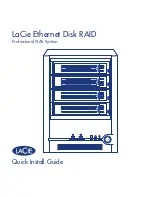
39
NOTE:
As a best practice, configure at least one matching primary subnet in your network. Otherwise, the
DHCP server selects only the first matching secondary subnet for address allocation. If the network
has more DHCP clients than the assignable IP addresses in the secondary subnet, not all DHCP
clients can obtain IP addresses.
IP address allocation sequence
The DHCP server selects an IP address for a client in the following sequence:
1.
IP address statically bound to the client's MAC address or ID.
2.
IP address that was ever assigned to the client.
3.
IP address designated by the Option 50 field in the DHCP-DISCOVER message sent by the
client.
Option 50 is the Requested IP Address option. The client uses this option to specify the wanted
IP address in a DHCP-DISCOVER message. The content of Option 50 is user defined.
4.
First assignable IP address found in the way discussed in "
5.
IP address that was a conflict or passed its lease duration. If no IP address is assignable, the
server does not respond.
NOTE:
•
If a client moves to another subnet, the DHCP server selects an IP address in the address pool
matching the new subnet. It does not assign the IP address that was once assigned to the client.
•
Conflicted IP addresses can be assigned to other DHCP clients only after the addresses are in
conflict for an hour.
DHCP server configuration task list
Tasks at a glance
(Required.)
Configuring an address pool on the DHCP server
(Required.)
(Required.)
Enabling the DHCP server on an interface
(Optional.)
Applying an address pool on an interface
(Optional.)
Configuring IP address conflict detection
(Optional.)
Enabling handling of Option 82
(Optional.)
Configuring DHCP server compatibility
(Optional.)
Setting the DSCP value for DHCP packets sent by the DHCP server
(Optional.)
Configuring DHCP binding auto backup
(Optional.)
Configuring address pool usage alarming
(Optional.)
Binding gateways to a common MAC address
(Optional.)
Advertising subnets assigned to clients
(Optional.)
Applying a DHCP address pool to a VPN instance
(Optional.)
















































